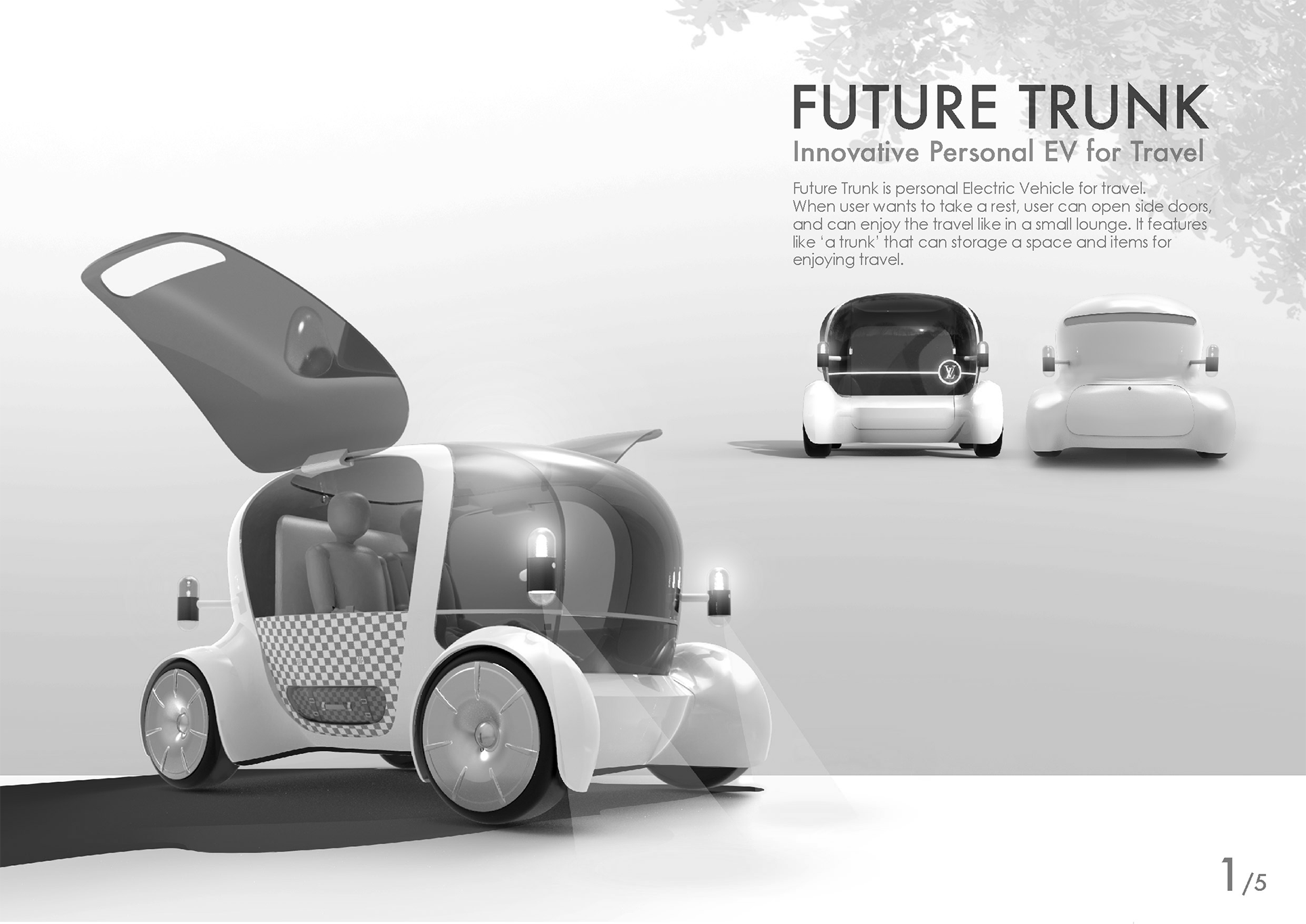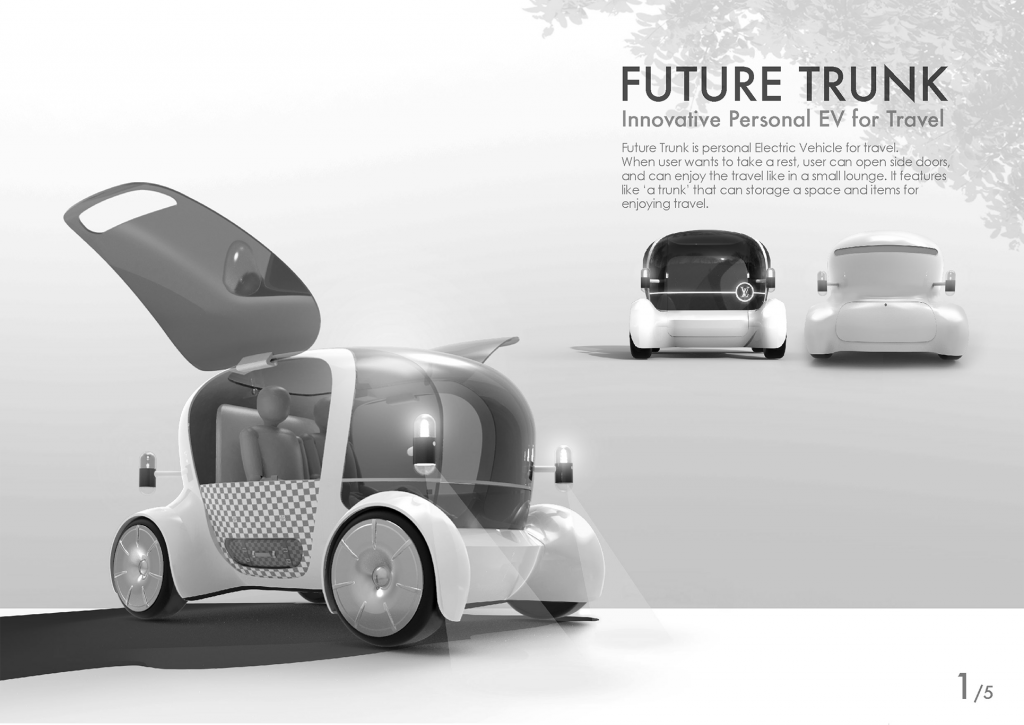
Master's Thesis
Future trunk: Future design factors for autonomous driving EV
퓨쳐 트렁크[FUTURE TRUNK]: 미래 자율주행전기차량을 위한 디자인접근법
The purpose of this study is to clearly present the direction that mobility should pursue through the research and analysis of chronological data on mobility development according to lifestyle changes, and to inspire future mobility development through the process of proposing a specific mobility concept.
이 연구는 라이프 스타일 변화에 따른 모빌리티 발전의 연대순 데이터 수집 및 분석을 통해 모빌리티가 추구해야하는 방향을 명확히 제시하고, 구체적 모빌리티 컨셉을 제안하는 과정을 통해 모빌리티 개발에 영감을 주는 것을 목적으로 합니다.

The future mobility direction is divided into three categories: shared mobility to relieve the first mile from home to public transport stops, and the last mile from stop to the destination (GroupA); Specialized mobility for less frequent movements such as travel and relaxation (GroupB); multipurpose and multifunctional eco-friendly mobility through transformation (GroupC).
미래 모빌리티 방향성은 세 가지로 분류됩니다: 집부터 대중교통 정류소까지 이동하는 퍼스트마일(First mile)과 정류소에서 목적지까지 이동하는 라스트마일(Last mile)을 해소해주는 공유차량(GroupA), 도시인들의 휴식이나 여행 등 빈도수가 적은 이동에 특화된 모빌리티(GroupB), 변형을 통한 다목적 및 다기능의 친환경 모빌리티(GroupC).

This paper proposes FUTURE TRUNK as an example of the GroupB concept that takes urban breaks as the main user context. The conceptual mobility(Future Trunk) is designed and developed based on three keywords: #Relax, #Travel, and #Openness. As a result of research, the brands that are easily accessible in everyday life like fashion can lead the design of the vehicle market, and the concept design was carried out by reflecting this result. Based on the assumption that what if Louis Vuitton, a leading fashion brand with the theme of travel, makes an electric car?’, it can be identified the mobility design process from idea sketching to prototyping, and conversing research data into mobility core design and visual elements. Finally, the FUTURE TRUNK concept was evaluated and analyzed by feedback from three experts from different perspectives: design, engineering, and sociology.
본 논문에서는 도시인들의 휴식을 주된 사용자 맥락(Context)으로 하는 GroupB 컨셉 예시로 FUTURE TRUNK를 제안합니다. #Relax, #Travel, #Openness의 세가지 키워드를 기반으로 디자인 및 개발되었습니다. 리서치 결과 미래 모빌리티는 패션처럼 일상에서 쉽게 접근할 수 있는 브랜드가 차량 시장의 디자인을 선도할 수 있으며, 컨셉디자인은 이를 반영하여 진행되었습니다. ‘여행을 테마로 하는 대표 패션브랜드 루이비통(Louis Vuitton)이 전기자동차를 만든다면?’ 이라는 가정을 토대로 아이디어 스케치에서부터 프로토타이핑 등에 이르는 모빌리티 디자인 프로세스를 확인할 수 있으며, 리서치 데이터를 모빌리티 핵심 디자인 및 시각적 요소로 변환하여 FUTURE TRUNK에 적용하는 과정을 보여줍니다. 마지막으로, FUTURE TRUNK 컨셉은 디자인, 엔지니어링, 사회학 등 서로 다른 관점을 가진 3 명의 전문가에 의해 평가 및 피드백 분석이 진행되었습니다.
